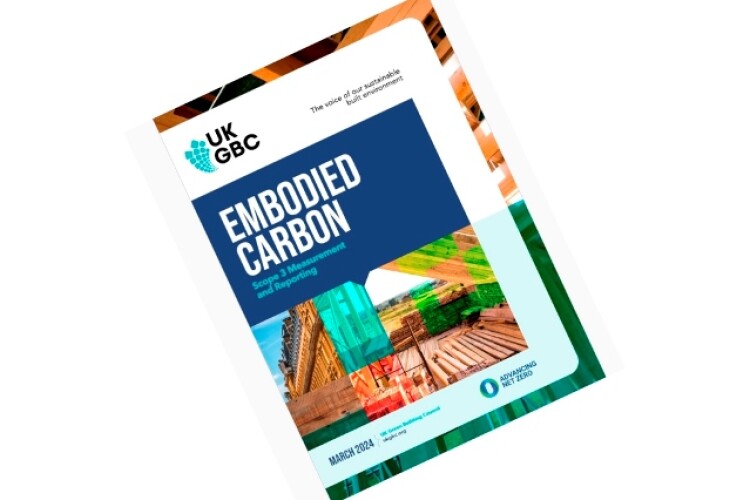UKGBC’s new guidance tackles the thorny issue of Scope 3 embodied carbon measurement and reporting. Scope 3 represents a proportion of an organisation’s indirect embodied carbon emissions that can constitute up to 80-95% of its total value chain footprint. The guidance reframes Scope 3 reporting as “a singular methodology rather than siloed efforts”, the council says.
The guidance says that architects, engineers and other professional services should adopt a project-based emissions disclosure for embodied carbon, due to the challenge of designing embodied carbon emissions that do not easily fit within the current Greenhouse Gas (GHG) Protocol.
The GHG Protocol sets out one way to measure emissions and is the most common way for organisations to assess their carbon footprint. However, without mandatory guidance, UKGBC finds that organisational-level Scope 3 reporting is typically undertaken separately to project-level embodied carbon assessments.
UKGBC says that its proposal for using embodied carbon assessments to substantiate Scope 3 reporting will enable organisations to benefit from improved detail within their GHG Protocol reporting.

Embodied carbon emissions occurring from projects designed by architects and engineers are not incorporated into the Scope 3 framework, reducing accountability and transparency of the emissions impact from design firms. Therefore, UKGBC encourages architects and engineers to adopt a project-based emissions disclosure to ensure that they are taking more accountability for the embodied carbon emissions that occur as a result of their designs. The disclosure of design-based embodied carbon will also help architects and engineers show the value proposition that they can bring to developers, contractors, investors and lenders, through sustainable design.
UKGBC wants the government to incorporate mandatory measurement and reporting of whole life carbon for projects with internal area exceeding 1,000 sqm or more than 10 dwellings. This must be followed by legal limits on the upfront embodied carbon emissions, with future revision and tightening, it says.
Yetunde Abdul, head of climate action at UKGBC said: “As the need for holistic, comprehensive and accurate embodied carbon reporting continues to rise, it is essential not to underestimate the importance of Scope 3 emissions. Given that a substantial portion of Scope 3 emissions originates from the embodied carbon of construction projects, achieving alignment and consistency is critical. This guidance aims to enhance understanding by bridging the gap between existing best practices and providing strategies for optimising reporting clarity and transparency.”
The full guidance can be found at ukgbc.org/wp-content/uploads/2024/03/Embodied-Carbon-Scope-3-Report.pdf
Got a story? Email news@theconstructionindex.co.uk



